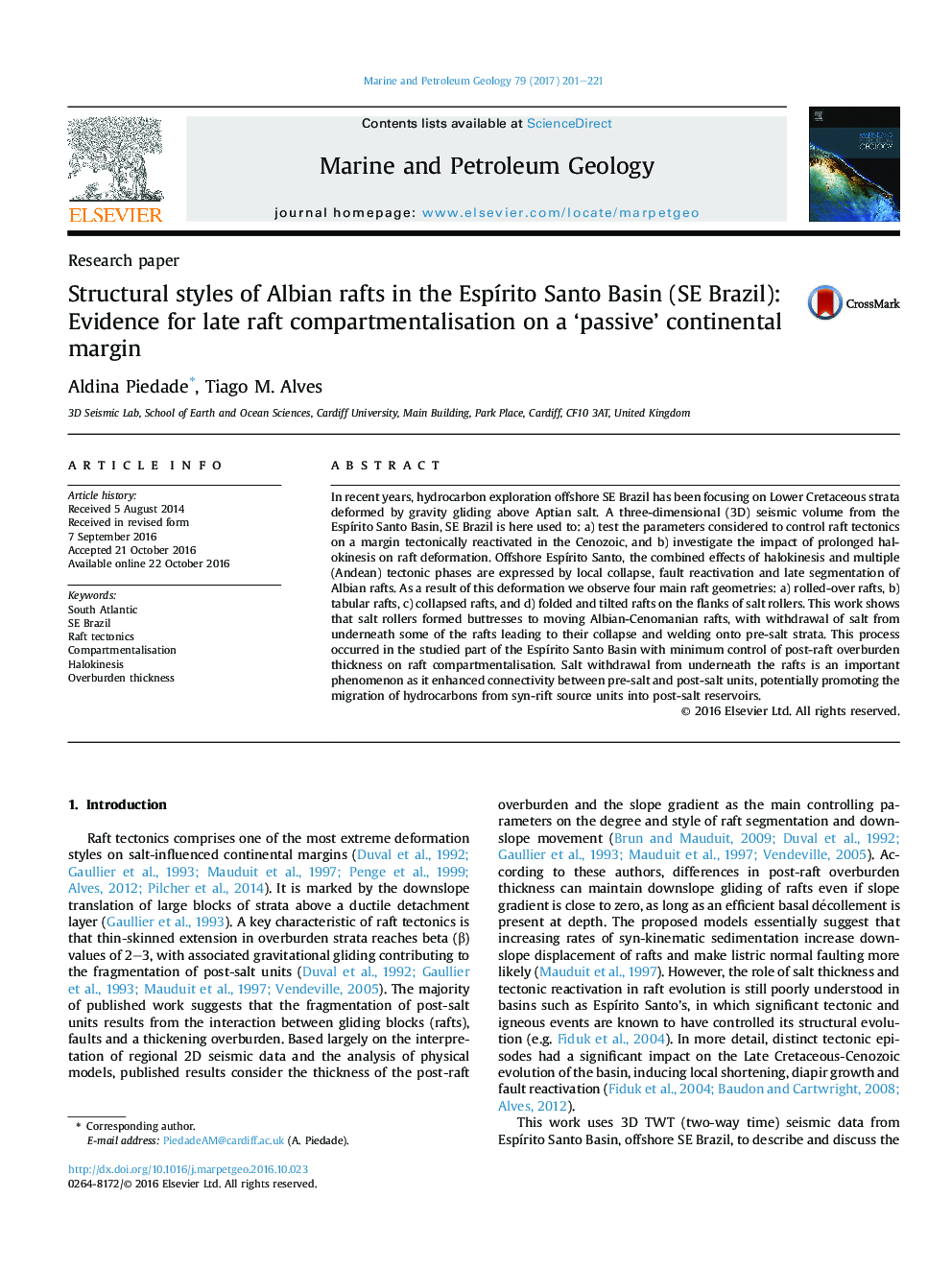| Article ID | Journal | Published Year | Pages | File Type |
|---|---|---|---|---|
| 6434315 | Marine and Petroleum Geology | 2017 | 21 Pages |
â¢Rafts in SE Brazil were reactivated at the end of the Cretaceous and early Cenozoic.â¢Slope oversteepening and halokinesis controlled rafts' internal deformation.â¢Late halokinesis improves connectivity with pre-salt strata by forming salt welds.â¢Salt welds and reactivated faults contribute to fluid migration from pre-salt to post-salt strata.
In recent years, hydrocarbon exploration offshore SE Brazil has been focusing on Lower Cretaceous strata deformed by gravity gliding above Aptian salt. A three-dimensional (3D) seismic volume from the EspÃrito Santo Basin, SE Brazil is here used to: a) test the parameters considered to control raft tectonics on a margin tectonically reactivated in the Cenozoic, and b) investigate the impact of prolonged halokinesis on raft deformation. Offshore EspÃrito Santo, the combined effects of halokinesis and multiple (Andean) tectonic phases are expressed by local collapse, fault reactivation and late segmentation of Albian rafts. As a result of this deformation we observe four main raft geometries: a) rolled-over rafts, b) tabular rafts, c) collapsed rafts, and d) folded and tilted rafts on the flanks of salt rollers. This work shows that salt rollers formed buttresses to moving Albian-Cenomanian rafts, with withdrawal of salt from underneath some of the rafts leading to their collapse and welding onto pre-salt strata. This process occurred in the studied part of the EspÃrito Santo Basin with minimum control of post-raft overburden thickness on raft compartmentalisation. Salt withdrawal from underneath the rafts is an important phenomenon as it enhanced connectivity between pre-salt and post-salt units, potentially promoting the migration of hydrocarbons from syn-rift source units into post-salt reservoirs.
